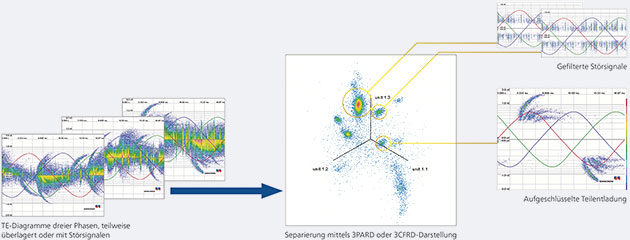Partial discharges can occur with excessively high field strength, damaged insulation material or abrasion due to mechanical stress and thus result in irreversible damage to the insulation system.
It can generally be said that partial discharge can occur at any point in the insulation where the electrical field strength is greater than the dielectric strength of the insulating material. In this case, small electrical discharges result at points with weak insulation, which erode the insulation in this area.
A coil ages due to the intake of sparkling particles into the high-voltage insulation. The more "consumed", the older the insulation and thus the insulation capacity.
Detailed depth analysis of the insulation system
Documentation and identification
Partial discharge measurement can be used to investigate the aging of the insulation system and identify local weak points in the insulation, whereupon recommended actions can be derived.
The partial discharge measurement measures and documents such weak points, i.e. the amount of the charge and the timing of the discharge within the voltage curve are determined. This makes it possible to differentiate between uncritical and harmful partial discharges, as well as possible external fault sources, which enables identification of possible sources of error.
A partial discharge measurement is recommended for a measuring range of 4000 volts or higher, since no significant discharge normally occurs below this level.

Our goal is your benefit: Detailed analysis of the insulation system with recommended actions
Your benefit
- Early detection of possible sources of error
- Reduction in the downtime risk
- Remaining service life estimate
- Reduction in the costs of downtimes
- Reduction or even prevention of costs for consequential damages
- Receipt of a defined damage pattern
